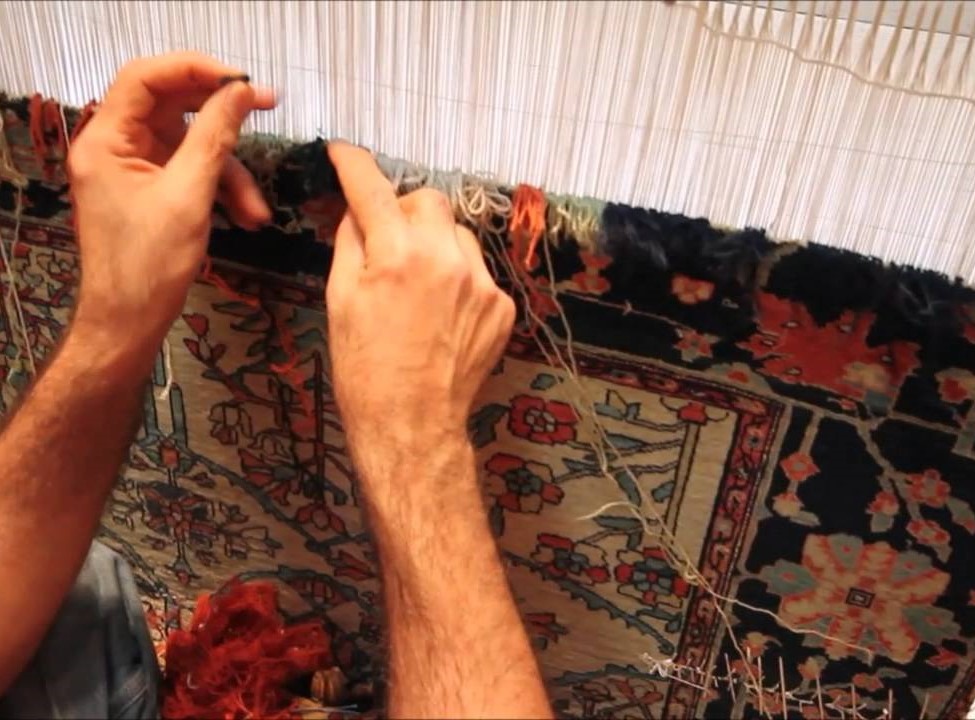If you’re a rug lover, you must’ve already heard a lot about the beauty, durability and quality of Pakistani handmade carpets.
Well, all the praises are 100% correct!
Read on to find out why Pakistani carpets are considered one of the best in market.

History of Handmade Pakistani Carpets
As the name suggests, Pakistani handmade carpets are made in Pakistan – a land famous for its rich culture and talented artisans.
The Asian subcontinent is known to be a region where carpet weaving began at a time when few other civilizations knew of the art. The ancient excavations at Mohenjo-Daro and Harappa show that the inhabitants of the Indus valley civilizations used weaving materials such as spindles. Some historians even believe that the Indus valley civilizations were the first one to have developed the making and use of woven textiles.
Carpet making was first introduced in the Asian subcontinent by Muslim conquerors. Before partition of the Indian subcontinent, the art of carpet weaving evolved and prospered under the Mughal rule. During this period, the local craftsmen started getting acquainted with the Persian styles of rug weaving and patterns.
Other than this, carpet patterns inspired by the Muslim architecture during the Mughal reign also became popular. Through trading, these handmade carpets became so famous that their demand grew in the European regions.
After the partition of the Indian Subcontinent, most of the carpet weavers moved to the newly formed Islamic Republic of Pakistan since a majority of them were Muslims. At the same time, the new Pakistani government started supporting heavy wool imports from Australia. Hence, the weavers easily found jobs in Karachi and Lahore.
Later on, carpet production started in many other cities of Pakistan, including Faisalabad and Peshawar. Here, Afghani artisans who fled the Russian occupation and Taliban in Afghanistan settled and started weaving a new form of handmade Pakistani carpets with designs highly influenced by the tribal cultures of Afghanistan.
As a result, the handmade Pakistani carpets being exported by Pakistan today are highly traditional and depict cultural associations with various tribes.
The Top Most Popular Types of Pakistani Carpets
Pakistani carpets are famous for their enchanting bold patterns, traditional motifs, and vibrant hues. No matter whether you purchase a Pakistani tribal rug or an Oriental rug, you’re definitely in for something amazing when it comes to Pakistani carpets.
Here are some of the most sought-after types of Pakistani rugs that are charming enough to spruce up the look of any room instantly:
1. Pak Persian Rugs
As discussed earlier, rug weavers in the Indian subcontinent were highly inspired by the Perian rug weaving techniques as well as patterns. The Pak Persian rugs bear a stark resemblance to the original Persian rugs crafted in Iran.
2. Pakistani Baluchi Rugs
Baluchistan is a province in Pakistan that shares borders with Iran and Afghanistan. The inhabitants of this region are people belonging to various tribes, but the Baluchi tribe hold the majority of population. Baluchi rugs are inspired by the culture of Baluchi tribesmen and have vibrant colors, mostly shades of reds and blues.
The rugs feature a geometric pattern and are eye-catchingly bold.
3. Chobi or Ziegler Rugs
Chobi or Ziegler rugs are much subtler in their colors than the other handmade Pakistani carpets. Their soft color palette and floral intricate motifs are the reason why these rugs are so popular both in the Eastern as well as the Western Hemisphere. Undoubtedly a great pick for modern and contemporary homes!
4. Beljik Rugs
Counted among one of the finest Pakistani handmade carpets and tribal rugs, the Beljik rugs are an epitome of luxury since they’re made using the wool from a sheep’s belly. The rugs are enticingly vibrant, have geometric patterns, and a luxurious soft texture that resembles that of silk rugs.
5. Mahal Rugs
The word ‘Mahal’ literally translates to ‘palace’ in Urdu, and these area rugs were first crafted by weavers to be placed in the Mughal palaces. The Mahal rugs are quite big, perfect for large living rooms, and feature a highly traditional pattern that often incorporates a central medallion.
6. Pakistani Kazak Rugs
Kazak rugs are originally a type of Caucasian rugs, but they’re also crafted in Pakistan. Oftentimes the quality of handmade Pakistani carpets is the major reason why people buy them, but in the case of Kazak rugs, the beauty of their design pattern supersedes the appeal of their soft velvety texture.
7. Pakistani Kilims
Kilims are another type of popular Pakistani handmade carpets, and by far, the most unique one. These are flatweave rugs, which means they don’t have a pile and are reversible. The rugs are available in a wide range of patterns, including plain stripes. Also, unlike many other tribal rugs, Kilims also come in monochrome themes.
8. Khal Muhammadi Rugs
The Khal Muhammadi rugs are large area rugs mostly in colors red, brown, and shades of off-white or beige. These rugs also feature geometric motifs and their design patterns are often dominated by a central medallion.
What Makes Pakistani Carpets a Great Rug Choice?
Apart from their captivating design patterns and vibrant hues that don’t fade easily, there are various other reasons why rug experts often recommend buying handmade Pakistani carpets. Such as:
- The Rugs are 100% Handmade
- Made Using Fine-Qualtiy Materials
- Highly Durable and Long-Lasting
A Pakistani handmade carpet would definitely capture the attention of onlookers, no matter where you place it in your home.
Also, since they’re made of fine wool and are hand-knotted by experts by employing ancient weaving techniques, the rugs can withstand high foot traffic. Pakistani rugs are also known to be highly resilient and can endure the wight of heavy furniture items without any dents appearing in the rug pile.
So, if you’re looking for a rug that would be easy to take care of and would last long, a Pakistani handmade carpet is just what you should buy!













